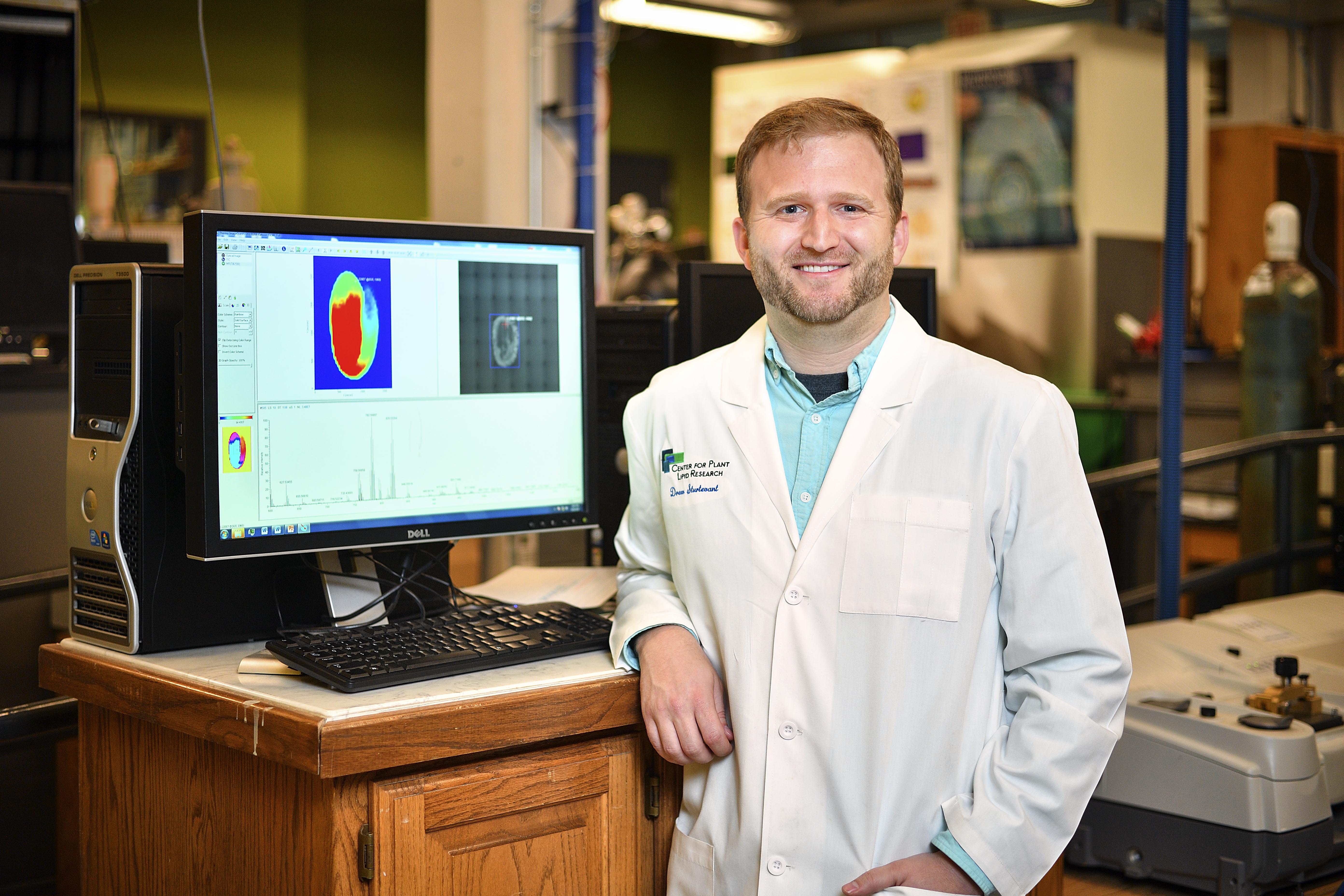DENTON (UNT), Texas – Arabidopsis thaliana is a seed so tiny that it can fit into Abraham Lincoln’s eye on a penny. Its small size, rapid life cycle and ability to produce thousands of seeds make this plant perfect for research. Now scientists who use it for studies have a new advantage. Drew Sturtevant, a student from the University of North Texas, was just able to complete 3D imaging of the inside of this tiny seed that reveals its chemical mapping for the first time. His breakthrough was recently published in the journal BBA Molecular and Cell Biology of Lipids.
“It’s exciting to have access to this technology at UNT and to be at the forefront of plant analytical biochemistry,” said Sturtevant, a doctoral student in the Department of Biological Sciences. “We’re getting a lot of recognition, because we have been able to show scientists why the location of these molecules in plant tissues is important.”
He was able to make his discovery by using technology called MALDI-mass spectrometry imaging. UNT is one of the only universities in the world that is home to a MALDI-mass spectrometer that is used primarily for plant tissues. The instrument is able to generate chemical heat maps, allowing researchers to locate exactly molecules are located in tissues.
“Using this technology, we can direct researchers looking for specific molecules to the exactly the right place and then they can use this information to conduct further experiments,” said Sturtevant. “While we used it to look at seed oils, this technology can be used to map proteins, sugars or plant hormones. The possibilities are pretty endless.”
While this part of Sturtevant’s research focuses on the mapping of lipids or oils, his next goal is to expand his work by looking at these and other chemicals in Arabidopsis and other seeds.
“It has been an incredible opportunity to have access and learn about the instruments available at UNT” said Sturtevant. “I really owe it all to the support of the University of North Texas, our research collaborators and my major professor Dr. Kent Chapman”





